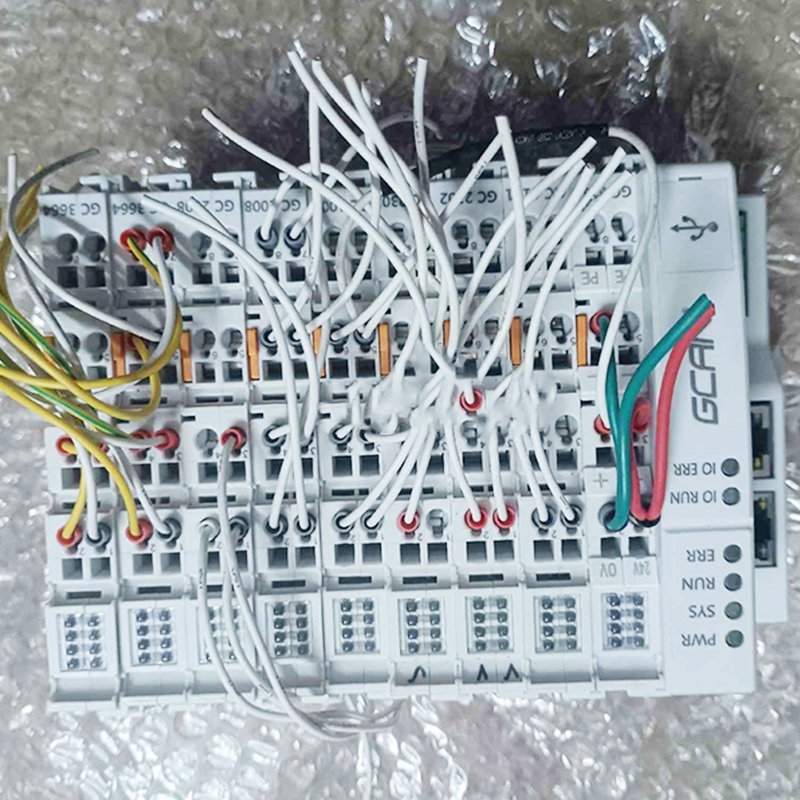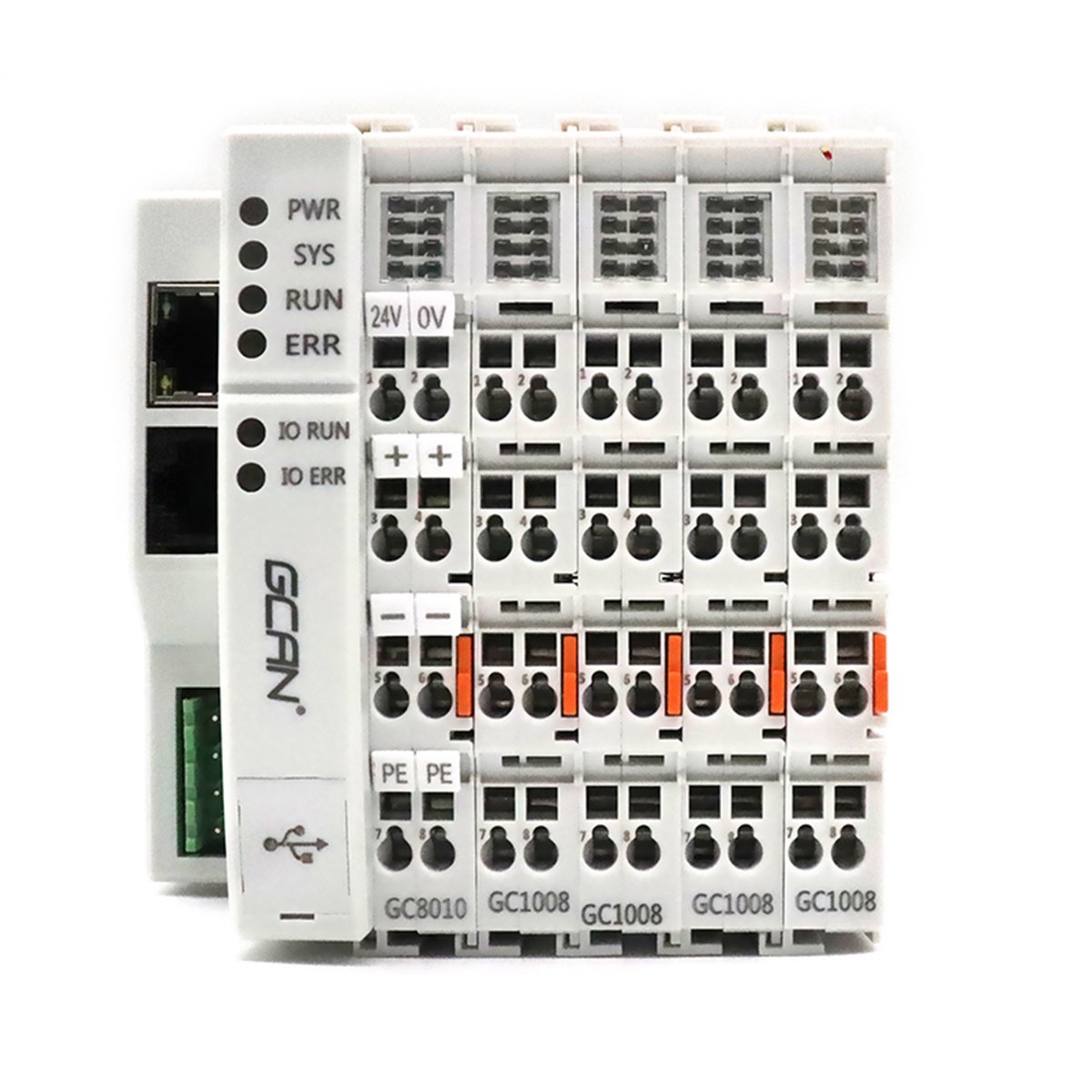À propos de la logique Ladder (LD)
La logique Ladder (LD) est un langage de programmation graphique couramment utilisé dans les automates programmables (PLC) pour l'automatisation industrielle. Cette section présente une vue d'ensemble de la logique Ladder, y compris sa structure, les symboles pour les contacts, les bobines, les temporisateurs et les compteurs, ainsi que ses avantages, ses inconvénients et ses applications dans le monde réel.
1. Vue d'ensemble et structure de la logique Ladder (LD) :
La logique Ladder représente la logique de contrôle à l'aide de diagrammes en échelle, qui ressemblent à des schémas de circuits électriques. La structure se compose d'échelons horizontaux et de rails d'alimentation verticaux. Chaque échelon représente une fonction de contrôle ou une opération spécifique.
2. Représentation des symboles en logique Ladder :
- Contacts : Les contacts représentent des conditions d'entrée ou des capteurs et sont désignés par les symboles normalement ouvert (NO) et normalement fermé (NC). Ils peuvent être utilisés pour examiner l'état d'un processus physique ou d'un signal.
- Les bobines : Les bobines représentent des dispositifs de sortie tels que des moteurs, des vannes ou des lampes. Elles sont activées en fonction des conditions définies par les contacts.
- Minuteries : Les minuteries sont utilisées pour introduire des délais dans le processus de contrôle. Ils peuvent être utilisés pour des tâches telles que les opérations basées sur le temps, le séquençage ou la synchronisation.
- Compteurs : Les compteurs sont utilisés pour compter les événements ou les occurrences et sont souvent employés pour des tâches telles que le traitement par lots, la surveillance de la production ou le contrôle des processus.
3. Avantages de la logique Ladder :
- Familiarité : La représentation graphique de la logique Ladder ressemble aux circuits traditionnels de relais ou de commande électrique, ce qui la rend facilement compréhensible pour les électriciens et les techniciens.
- Débogage visuel : Le diagramme en échelle fournit une représentation visuelle de la logique de commande, ce qui facilite le débogage et le dépannage.
- Convivialité : La logique Ladder est relativement facile à apprendre et à programmer, et ne nécessite qu'un minimum de connaissances en programmation.
- Interchangeabilité : Les programmes de logique Ladder peuvent être facilement transférés entre différentes plates-formes PLC, ce qui garantit la flexibilité et la compatibilité.
1
1
1

1
1
1

1
1

1
1
1

4. Inconvénients de la logique Ladder :
- Fonctionnalité limitée : Par rapport à d'autres langages de programmation, la logique Ladder peut présenter des limites lorsqu'il s'agit de calculs mathématiques complexes ou de manipulations de données avancées.
- Évolutivité : Au fur et à mesure que le programme de contrôle devient plus complexe, la maintenance et l'organisation du diagramme en échelle peuvent devenir difficiles.
- Absence de programmation structurée : La logique Ladder n'offre pas le même niveau de construction de programmation structurée que des langages tels que le texte structuré ou le diagramme de blocs fonctionnels.
5. Applications et cas d'utilisation :
- Contrôle des moteurs : La logique Ladder est largement utilisée pour les applications de commande de moteur, gérant des tâches telles que la commande de démarrage/arrêt, la commande de vitesse et la surveillance des défauts.
- Systèmes de convoyage : La logique Ladder est utilisée pour contrôler et coordonner les bandes transporteuses, y compris les tâches telles que le tri, la fusion et le détournement des produits.
- Contrôle des feux de circulation : La logique Ladder est utilisée dans les systèmes de contrôle des feux de circulation pour gérer la synchronisation et le séquençage des feux de circulation.
- Lignes d'emballage et d'assemblage : La logique Ladder est appliquée pour contrôler les processus d'emballage et d'assemblage, garantissant ainsi des opérations efficaces et synchronisées.
- Contrôle des pompes : La logique Ladder est utilisée pour contrôler les pompes dans diverses industries, telles que les usines de traitement des eaux ou les raffineries de pétrole et de gaz.
Conclusion :
La logique Ladder (LD) est un langage de programmation largement utilisé dans les automates programmables industriels. Sa représentation graphique et ses symboles intuitifs le rendent accessible aux techniciens et aux électriciens. Malgré ses limites en matière de calculs complexes et de programmation structurée, la logique Ladder continue de jouer un rôle important dans le contrôle de divers processus, notamment la commande de moteurs, les systèmes de convoyage, les feux de signalisation, l'emballage et le contrôle des pompes. En comprenant la structure, les symboles, les avantages et les applications de la logique Ladder, les ingénieurs et les techniciens peuvent utiliser efficacement ce langage de programmation dans leurs projets d'automatisation.
